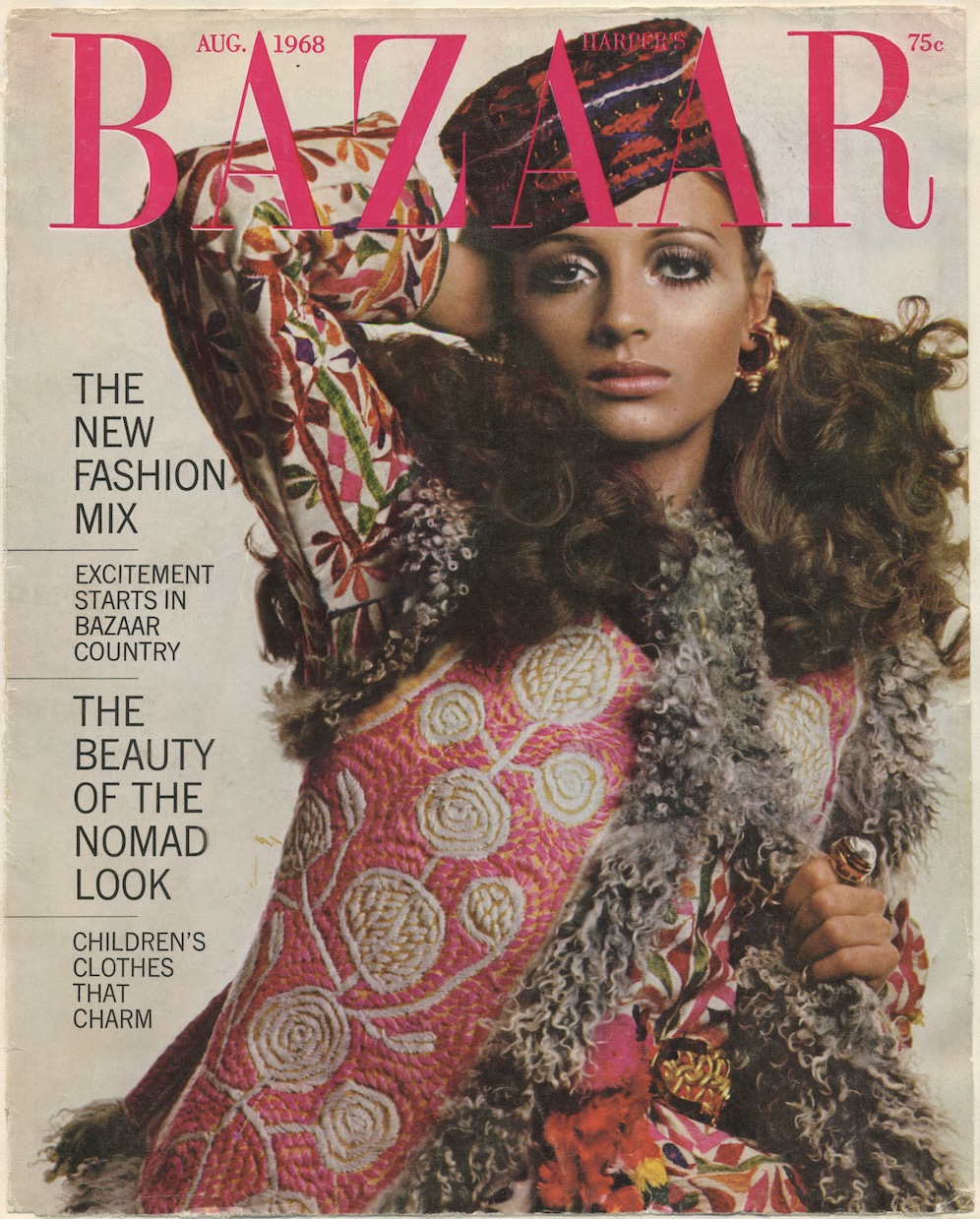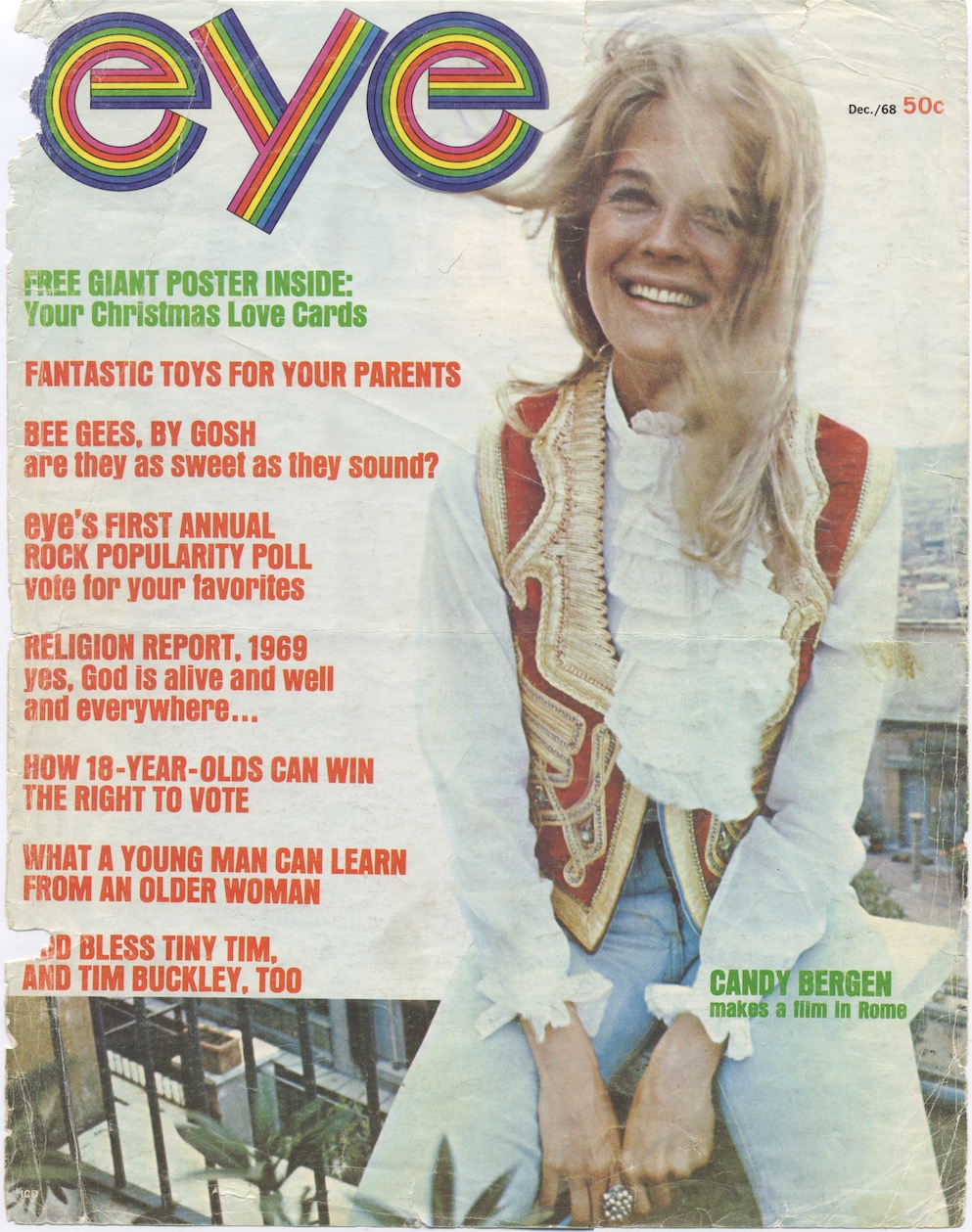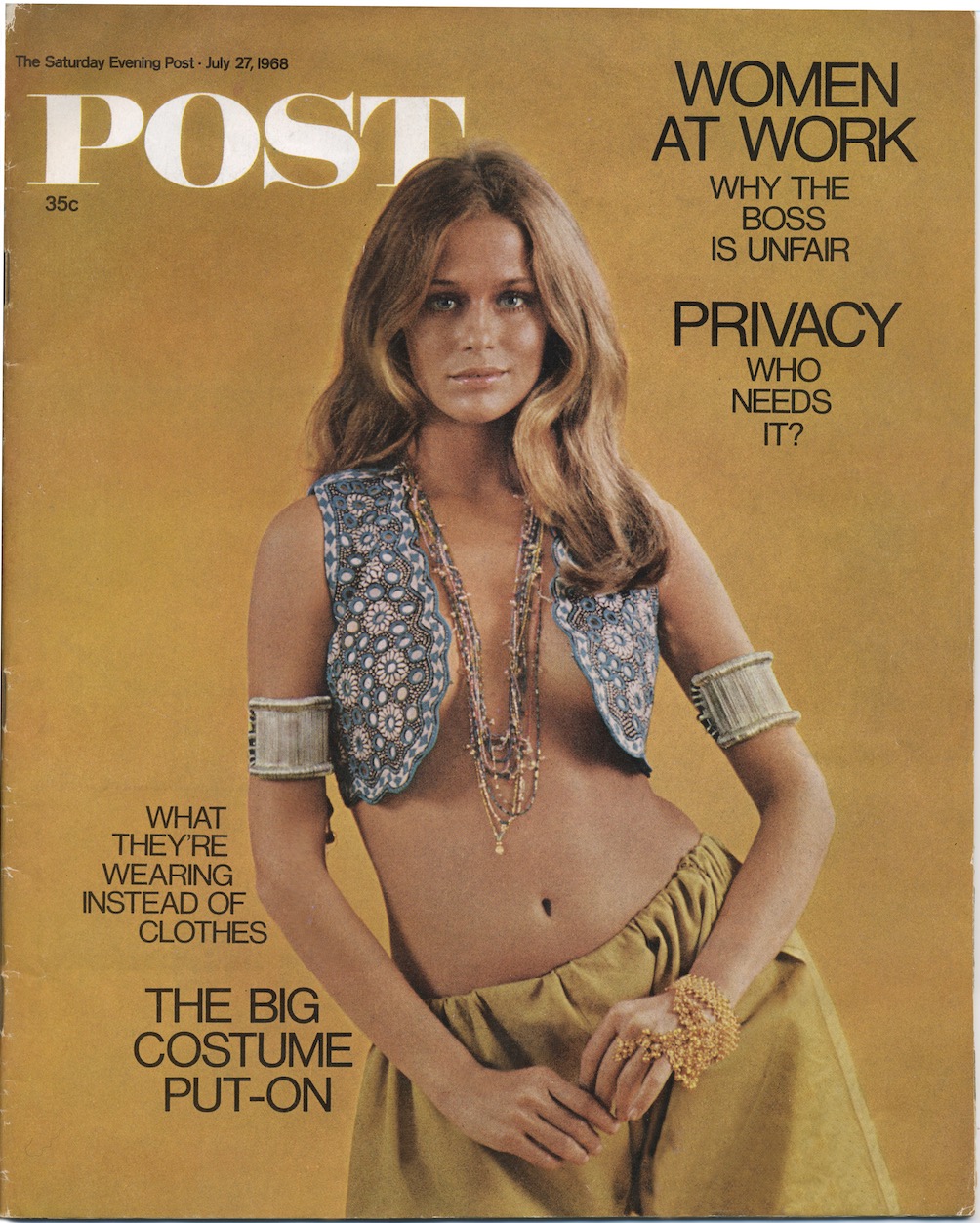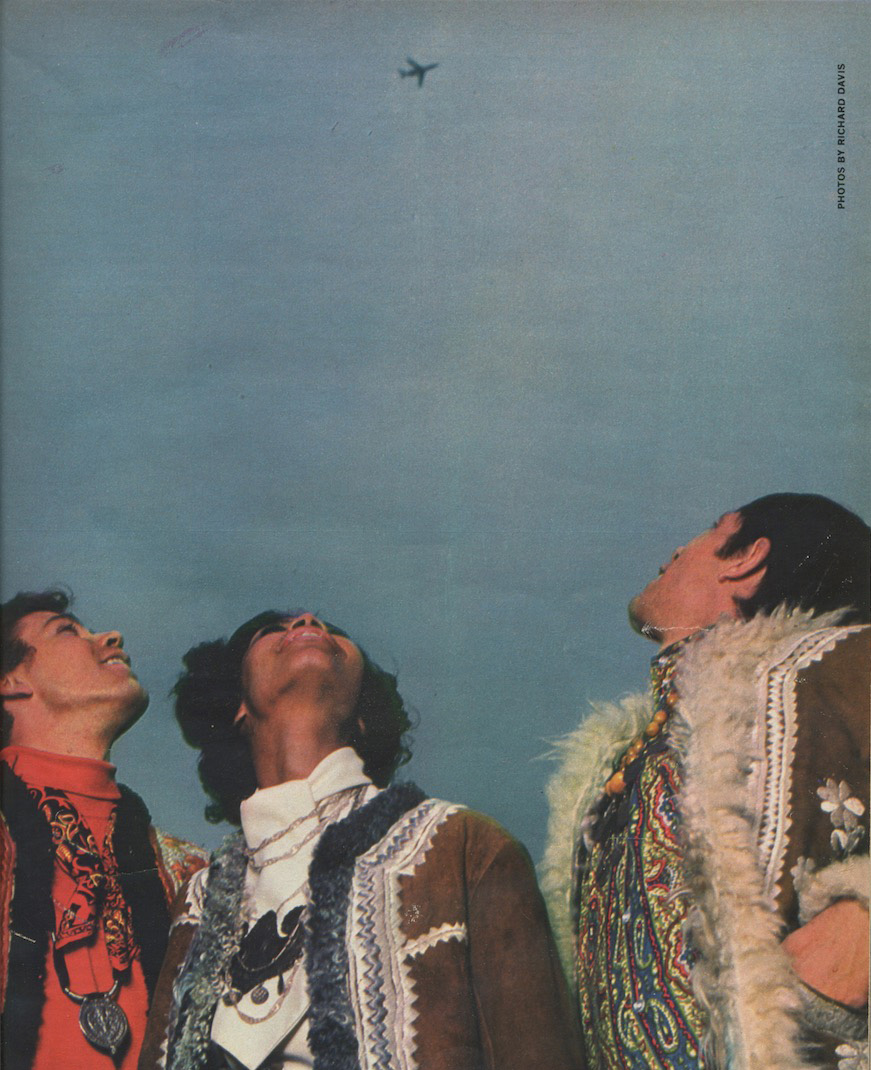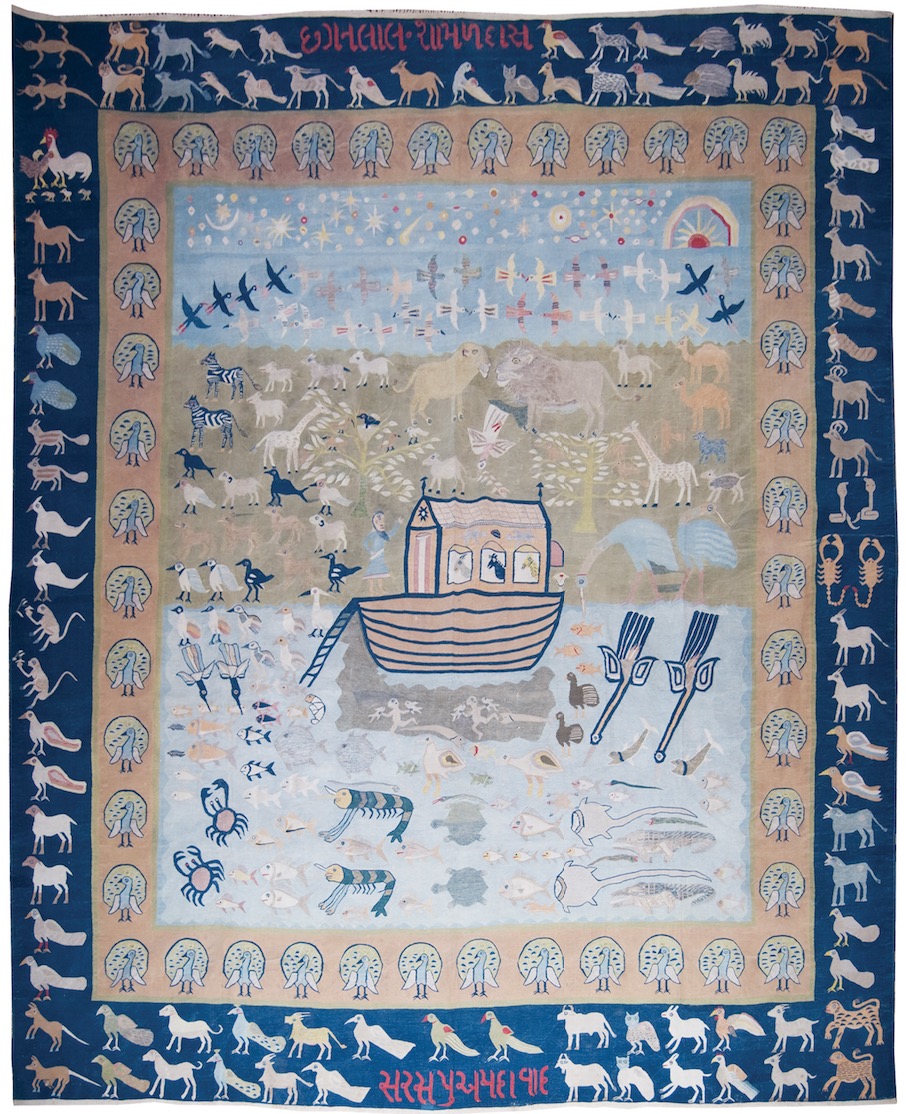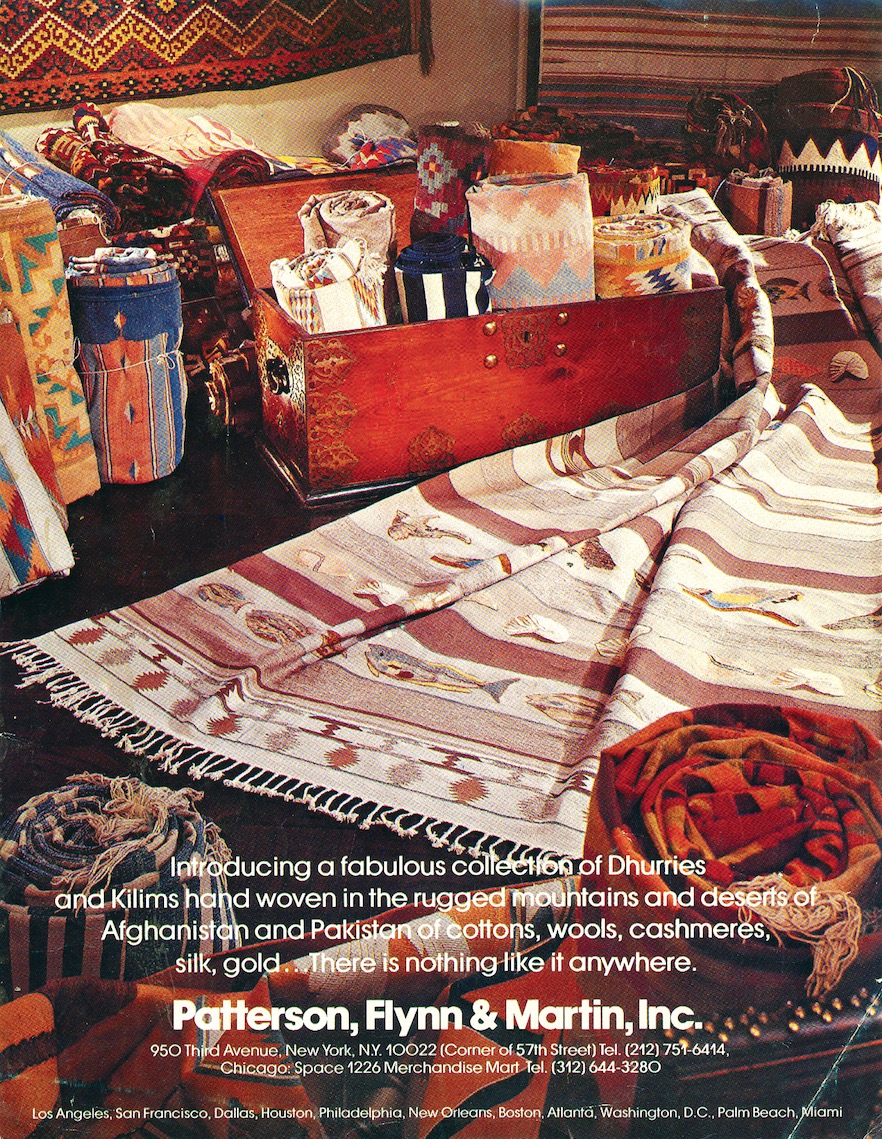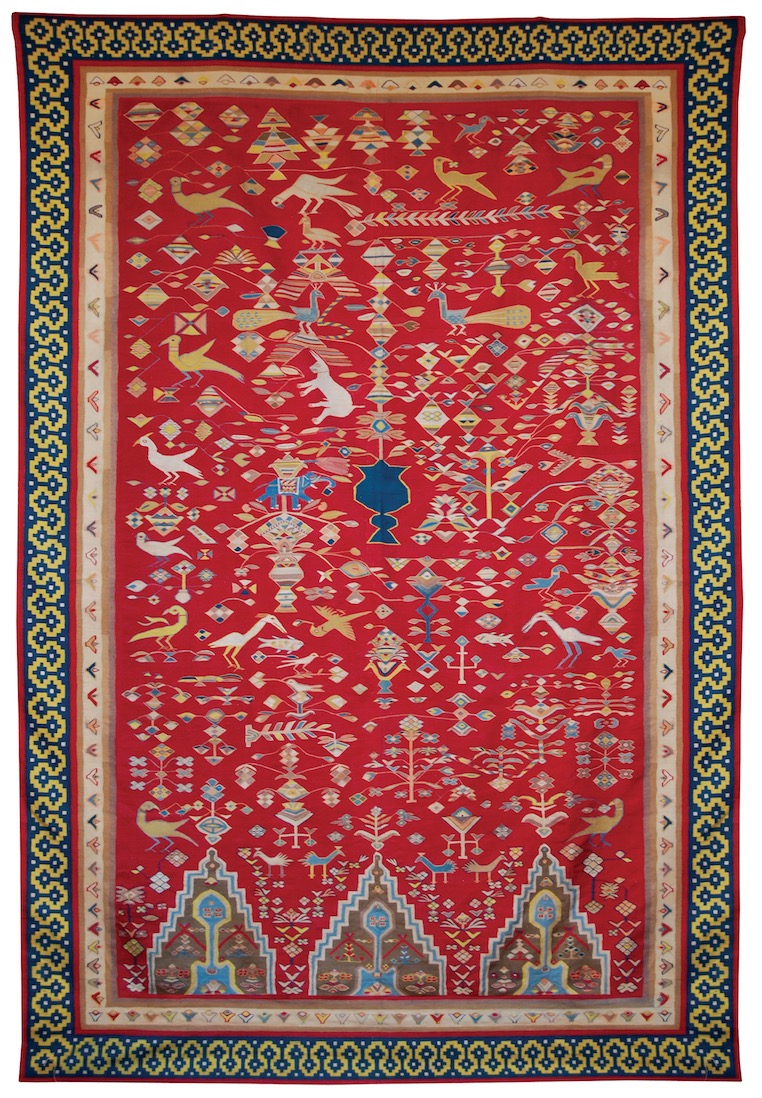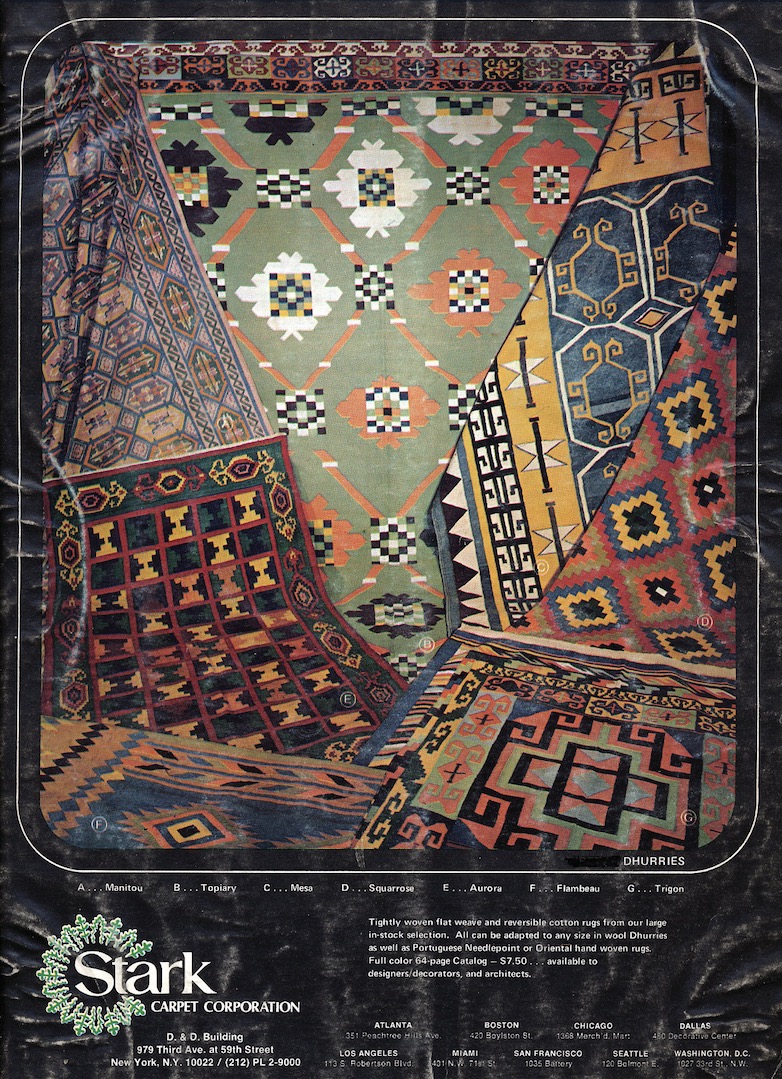1970-1978Tents & Beadwork
In 1970 Ira partnered with Angelo Donghia to redesign Pakistani wedding tents for western urban dwellers. Ira set himself up in Lahore to manufacture the tents with local tentmakers, who specialized in the Gulgari style of boldly patterned, hand appliqued tents. The room-sized tents, sold in Bloomingdale's and through Donghia's company, Vice Versa, allowed customers to transform an entire room into an exotic experience of color and pattern. The designs included richly canopied beds and a variety of accessories. The concept was so successfulthe original hand appliqued versions were eventually reproduced on a larger scale in more affordable printed fabrics. In the Spring of 1974, Ira and Sylvia designed their own nomadic dwelling, a twelve-sided tent in which every other panel could open for ventilation. Working daily with a group of Kabul women, they pieced together brilliantly colored textile scraps found in the local bazaar into collages for each of the twelve doorways. The fabulous tent made its debut on a friend's land in Woodstock in the summer of 1974.
1975-1980Tents & Beadwork
1975 was an incredibly productive year as Ira and Sylvia divided their time between weaving projects in Balkh, Afghanistan and Bahawalpur, a Pakistani village near the Sind Desert. Balkh, an ancient sleepy village near the Soviet border, was a former capital of Alexander the Great's empire, birthplace of the poet Rumi, and purported resting place of Zoroaster. Renting a vacant lot behind the main square's tea house and across from a lovely park, Ira oversaw the construction of a small factory housing 15 looms. That winter, sixty men, including dye-masters and assistants were busily engaged. Though the work was often challenging, the weavers chanting to the beats of their shuttle sticks imbued the atmosphere with harmony and magic. Throughout the fall and freezing, snowy winter, warmed by makeshift wood stoves and layers of clothing, Ira and Sylvia worked with their Afghan crew to create the finest rugs possible. Building on local traditions, they designed naturally dyed, flatwoven rugs, both geometric and figurative. They also created one of a kind silk, art rugs interwoven with metallic copper, silver, and gold threads imported from France.Throughout this endeavor, Sylvia was the only woman among this group of Afghan men with their intense, weathered faces and imposing manners. She recalls it as a creative, comfortable working environment, but she also sought out the companionship of local Mazar-i-Sharif women, working with one on patchwork velvet quilts. The weavers were receptive to new techniques and learned to weave intricate birds, fish, animals, and figures in addition to geometric patterns. Contracted to create custom orders first by Harmony Carpet of NY, then by Patterson, Flynn and Martin, one of the first custom orders cut from the new looms was a special design for Gloria Vanderbilt, featuring horses and elephants. Ira and Sylvia went on to design a popular line of dhurries and kilim called Afghan Traffic, inspired by the continual trains of camels, flocks of sheep, and pure white doves crossing the Afghan landscape. The weavers continued filling orders for New York over the next few years. After the Serets returned to New York in July of 1978, the factory was turned over to its manager, Sher Mohammad, who continued the work for many years until the pressures of war forced its closure.
1981-2003East Alameda Showroom
In 1981, an outdoor courtyard along the Santa Fe River became the Serets first retail outlet. The business soon expanded into an adjoining two-story building. At the time Santa Fe was in the early stages of becoming an international mecca for an eclectic mix of creative people. Designer Chuck Winslow featured the Seret store in an Architectural Digest story. That same year Ira became the first designer to break away from viewing flat woven rugs simply as art for covering floors. Opening up a whole new world of design, Ira began using dhurries and kilim to upholster fabulous couches, chairs, chaises, and other furnishings in unique, traditional textiles. This new trend became one of the Seret's fashion trademarks, which has been widely imitated but rarely duplicated. The inventory also diversified to include hand carved architectural antiques and furnishings from India, northern Pakistan, Peru and Tibet. The courtyard and galleries overflowed with Central Asian and Indian furnishings that the Serets recognized as the perfect complements to the area's indigenous, adobe-style architecture. These elements, together with the bold new vision of carpet-upholstered furniture, greatly influenced the developing Santa Fe style.
1985-PresentRug Furniture
Until 1982 only rarely were rugs or carpets ever cut up to upholster furniture. Ira Seret, with one of the world's best flat woven rug collections, decided that beautiful rugs had more potential in the home than merely to be stepped on. And so the rugs were reborn as couches, chairs, headboards, chaises, and the fashion became well established. Today, Seret & Sons stocks a variety ofchairs, benches, sofas, ottomans, and chaises upholstered in rugs, suzanis and leather. We also make custom pieces for with any of the rugs or textiles found in our store. We are happy to work with you via email if you cannot make it into Santa Fe.
1985-PresentGalisteo Showroom
The Serets passion for design incorporating architectural elements from the east led to a new shop location in 1989. An empty lot on Galisteo Street became a two story Alhambra style gallery, designed to resemble an ancient market center. Over the following years, adjacent properties were added until Galisteo Street became their main location. The Seret & Sons compound of buildings and outdoor areas now fills most of the block at the corner of Galisteo and West Alameda. Today, Seret & Sons 70,000+ square foot gallery houses furnishings and architectural antiques from a dozen countries. The store is known for its extensive collection of rugs from Central Asia and beyond- gabbehs, dhurries, kazaks, and kilims as well as a world class collection of antique rugs assembled by Ira Seret over his long career as a collector. Gorgeous antique furnishings from Tibet, India, and Peru also abound the Seret collection of Tibetan furnishings is the largest in the world. The collections of rugs and antique furniture are perfectly complemented by one-of-a-kind carpet and dhurry upholstered couches, chairs, chaises, etc. designed by Ira Seret and custom created by local craftsmen. Seret & Sons also carries hard to find oversized kilim and dhurries, and welcomes custom orders for wool, silk and cotton carpets or flatweaves in a wide range of designs, including Tibetan, Native American and traditional Afghan/Caucasian. All carpets are produced overseas in quality controlled cottage industries with which the Serets have developed relationships over decades. Behind the main store building is an expansive outdoor yard, where columns, doors, and wrought iron work, both old and new, mingle in a labyrinth of inspiration. Visitors and home decorators are treated to an ever-changing visual feast of inspiring materials. With personalized, in-house design assistance and a team of talented craftsmen, each customer's vision can be realized into a functional work of art. The Seret design team has supplied fine homes, hotels, restaurants, theme parks, and other large projects with floor to ceiling services.
1998-2007Disney
In 1998, the Imagineers of Disney's Animal Kingdom in Orlando called on Seret & Sons to supply the new theme park with authentic, one-of-a-kind architectural elements, such as carved marble pavilions and fountains, antique wood columns, windows, doors, and more. They also commissioned the Serets to replicate one of the intricately painted trucks seen carrying cargo in modern Afghanistan and Pakistan. Working for three months with local artists, the Serets painted and decorated a specially designed vehicle to be placed in the middle of Animal Kingdom. Ten years later it remains a unique feature in the Park. In 2007 Seret & Sons designers again collaborated with Disney's Imagineers and Steven Schussler, founder of the Rainforest Cafe, to create the Himalayan-themed restaurant "The Yak & Yeti", the largest sit-down restaurant in the Animal Kingdom park. For the Yak & Yeti Seret & Sons designed and handcrafted highly detailed work for the restaurant's interior and exterior, including architectural millwork, doors, columns, a stone inlaid bar, stair cases adorned with carved railings, mosaic floors, ceilings, inlaid mosaic and carved furniture, props and retail fixtures.
1993-PresentInn of The Five Graces
In 1993 the Serets acquired a historic Santa Fe property on one of the city's oldest streets, East De Vargas, a short walk from the Plaza. After three years of remodeling the compound of adobe and river rock buildings, and secluded courtyards, they opened Serets 1001 Nights as a bed and breakfast. The Inn was originally conceived as a showcase for the Serets creative talents and their extraordinary collection of antique furniture, textiles, carpets and architectural elements gathered from countries along the Silk Road. The Serets blended these furnishings with the local southwestern vernacular to create evocative East meets West interiors in signature Seret style. All rooms featured Ira Seret's uniquely designed, upholstered dhurry and kilim covered furniture. As the project evolved, Sylvia began to create tiled mosaic bathrooms that inspire awe and enchantment.In 2002 Serets 1001 Nights was featured in Architectural Digest. Later that fall, the Garrett Hotel Group took over business operations and the Inn was renamed The Inn of the Five Graces. Today, the Garrett Hotel Group's years of experience offering the world's finest hospitality is combined with the Seret's unparalleled talent for creating comfortable, contemporary living spaces using handmade treasures gathered from Silk Road craft traditions. The Serets ever evolving creative style has been continually reflected in every update of the hotel's magical interiors. From the richly embroidered bedspreads to the stunning rugs, antique carved columns, archways, and marble panels, each magnificent element found in the The Inn of the Five Graces has its source at Seret and Sons 70,000 square foot galleries just a five minute walk from the Inn. The Seret aesthetic, evident throughout the Five Graces, has been instrumental in making Santa Fe an inspiration for cosmopolitan interiors that revel in color, celebrate culture, educate the eye, and encourage a feast for the five senses.
1998-PresentTibetan Furniture
In the late 1990s Ira and Sylvia began to collect what has since become one of the world's largest and finest collections of antique painted Tibetan furniture. The collection features an eclectic array of antique artistic and functional pieces, including trunks, cabinets, altars, tables, ceremonial drums and painted door panels. These pieces are joined by a selection of rare, culturally significant items representing the esoteric artistic tradition of Tibetan Buddhism, some dating back as far as the late 14th Century. These pieces represent the many ways in which skilled craftsmanship has graced the material culture and daily lives in many monasteries and private homes of the Tibetan people. The Serets collection of Tibetan furniture gained international recognition when twenty-four pieces were chosen for the exhibit, WoodenWonders, held at the Pacific Asia Museum in Pasadena, California between November 2004 and February 2005. This is the most comprehensive overview to date of the history and development of Tibetan furniture, raising awareness of the depth and beauty of this rich cultural tradition. For more information on the Serets work with endangered cultures, please visit the Jindhag Foundation.
1999-PresentCustom Design
Seret & Sons works with clients from all over the world on personalized residential and commercial projects. Whether designing a small piece of living room furniture or creating the entire interior of a hotel, Seret & Sons in-house design team brings the same attention and innovation to each project. Designers work with the client through every step of the process- from initial sketches to designing and fabricating rugs, furniture, built-in units and architectural elements. Seret & Sons' vast selection and relationships with custom craftspeople throughout Central and South Asia. Seret & Sons is committed to working with artisans whose work is rooted in ancestral traditions- weaving, embroidery, wood and stone carving, painting and metal forging. These traditions are seamlessly integrated into private homes and commercial spaces throughout the world. Whether a project is large or small, the finished product will vividly reflect each client's unique, personal vision.
